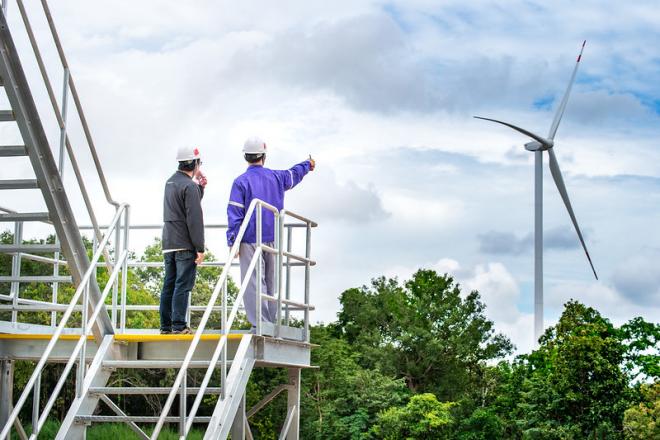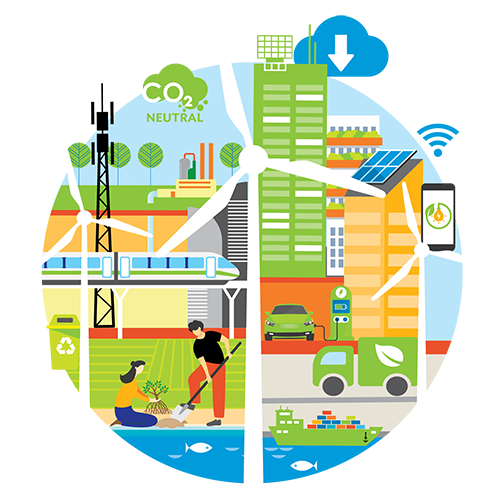
The coronavirus disease (COVID-19) pandemic is a grim reminder to everyone to take better care of the environment.
Some countries have taken the message to heart by making sure their recovery strategies incorporate nature-based and sustainable solutions not only to head off future pandemics but also to be more resilient given the existential threat from climate change.
In a new book from the Asian Development Bank (ADB), Green Finance Strategies for Post-COVID-19 Economic Recovery in Southeast Asia: Greening Recoveries for People and Planet, the authors say a “green recovery” is increasingly seen as “the best and only way” for countries to revive their economies. “Green in this context encompasses a number of elements, including sustainability of natural resources and climate resilience, as well as inclusiveness for all sections of society. Green infrastructure for a green recovery is an especially critical area to focus on given the scale of impacts that infrastructure development can and have had, both positive and negative.”
The book argues that a green recovery is the best option for countries because it has the potential to create long-term jobs, accelerate climate resilience, protect the environment and natural capital, and catalyze capital at scale.
In launching the book in October, Anouj Mehta, who led the team who prepared the report, says the book is relevant especially for governments in Asia as they start to look at economic recovery packages to try and mitigate the impacts of the pandemic. “The issue is fundamental, with contraction projected across Asia of 0.7%, for the first time in six decades and in Southeast Asia of 3.8%.” Mehta is also the unit head of ADB’s Green and Innovative Finance and the ASEAN Catalytic Green Finance Facility.
Some governments have received the message loud and clear. The books notes that the European Union, Germany, Republic of Korea, Luxembourg, Norway, and United Kingdom have embraced green recovery in the wake of the pandemic. In Southeast Asia, meanwhile, Indonesia, the Philippines, and Viet Nam have also opted for green recovery.
Potential to create jobs
The book notes the pandemic has hit the weakest and the poorest, particularly women and young people. It cites a report from the International Labour Organization and ADB that between 10 million and 15 millions youth jobs may be lost across Asia and the Pacific in 2020 due to COVID-19.
"Sustainable and secure job creation thus has to be a key goal of recovery strategies whether created directly (e.g., infrastructure construction projects) or unleashed indirectly as ancillary economic activities (e.g., trade in agribusiness commodities or ancillary tourism activities)," the book says.
Switching to clean energy industries has the added bonus of creating jobs, the report adds, citing a 2017 report which estimates that every $1 million in spending can generate 7.49 full-time equivalent jobs in renewable energy infrastructure and 7.72 jobs in energy efficiency against just 2.65 jobs in fossil fuels.
A 2020 report commissioned by the World Economic Forum, meanwhile, identifies 15 systemic green transitions with annual business opportunities worth $10 trillion that could create 395 million jobs by 2030.
Safeguarding natural capital and mitigating climate change
Even before COVID-19, much of the planet's natural capital has been under threat, including in countries in Southeast Asia. The region, in fact, is considered one of the most vulnerable on the planet, with increasing frequency of typhoons; rising sea levels; a long, exposed coastline; and urban water shortages often linked directly to climate change.
"The COVID-19 impact has only served to make a highly vulnerable population even more exposed,” the book cautions.
Such threats highlight the need for nature-based interventions that support natural resource protection, regeneration, and long-term resilience with key sectors prioritized for recovery strategies depending on local circumstances.
The book says that managing climate change and enabling climate resilience may be the most critical elements for any green recovery strategy to address.
It notes that over a third of the 7 million premature deaths related to air pollution reported globally are in Asia and the Pacific, a stark evidence of the importance of climate change, compared even with the COVID-19 pandemic, whose latest death toll stood at 2.48 million. Disasters linked to climate change and unsustainable development are also estimated to have caused $3 trillion in direct economic losses, while climate-related and geophysical disasters from 1998 to 2017 led to 1.3 million deaths.
“Addressing climate change through green recovery is thus integral to addressing the sustainable development challenges of each country,” the book stresses.
Mobilizing green capital
While the need for green recovery strategies mounts, there continues to be a dearth of green financing across the world or even in Southeast Asia. Between 2016 and 2030, Southeast Asia alone needs an estimated $3.1 trillion, or $210 billion annually, for climate change-adjusted infrastructure investments.
With government budgets stretched thin because of COVID-19-related spending on mitigation and emergency relief measures, the book forecast the financing gap for green projects to widen further.
“Post-COVID, that gap has probably widened and the risk perception a little higher and governments therefore need to create de-risking, and catalyzing mechanisms that can mobilize, pull in the financing from pension funds, insurance companies, commercial banks,” says Mehta.
Given slower revenue flows due to the pandemic slowing economic activity, the book cautions governments to be careful not to run up debts. Governments must also ensure their debt-to-GDP (gross domestic product) ratios remain sustainable to avoid ratings downgrades, which could impact their access to capital.
The book says governments should consider tapping private, institutional, and commercial funds to finance green projects. It cited public–private partnerships, pension funds, commercial banks, and the capital markets among sources of green financing governments may tap.
It says multilateral development banks like the ADB and other international financial institutions can also provide support to governments in developing mechanisms and approaches as well as the needed underlying project pipelines and capacities to attract capital. "Orienting infrastructure investments to be green, inclusive, and job creating, will also require accompanying policy and regulatory support. This support should include globally acceptable green project selection frameworks, policies to phase out fossil fuel subsidies, carbon pricing, and reforming procurement programs and value chains."

